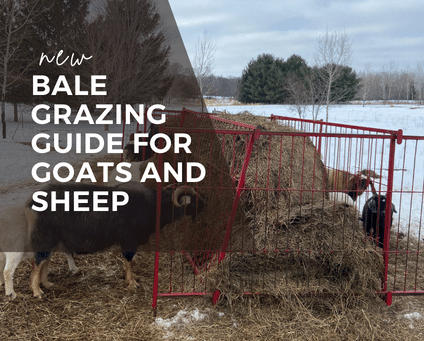One of my absolute favorite things to talk about (and something I always get a lot of questions about) is bale grazing and how we make it work with our goats and sheep. Wisconsin winters bring heavy snowfall which means that at a certain point we can no longer rely on stored forage. That’s where bale grazing comes in.
Bale grazing is when you allow livestock to feed off a whole, intact round bale, as opposed to unrolling the bale all at once or feeding flake by flake. As the bale is eaten, the “waste” that’s left behind acts like a concentrated boost of nutrients that gives some serious benefits to your pasture, including increased plant density and diversity, increased moisture retention, built up carbon in the soil, and more. In other words, it’s a great way to continue to practice regenerative agriculture, even in the winter.
And while bale grazing can be a great tactic for many different types of livestock, there are important considerations to be made for small ruminants, like goats and sheep. But if you’re like I was in the beginning, it was pretty confusing to know exactly where and how to start.
That’s why I put together a new Bale Grazing Guide for Goats and Sheep! You’ll learn the ins and outs of bale grazing through a step by step process (with plenty of tips and tricks along the way) that you can then apply to your own herd and/or flock and reference as often as you need. I can’t wait for you to check it out!
This comprehensive 8-page guide includes:
- The benefits of bale grazing
- Supplies and equipment needed
- Detailed set-up instructions
- How to practice adaptive bale grazing
- Using a bale feeder
- Tips for success
- Frequently Asked Questions

LEAVE A COMMENT
Comments